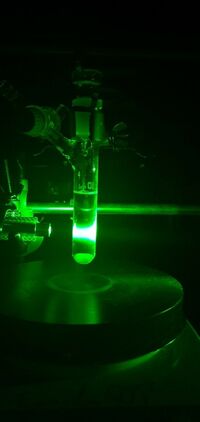Have any questions?
+44 1234 567 890
M. Sc. Paul Hünemörder
Leibniz Institute for Catalysis
Albert-Einstein-Str. 29a
18059 Rostock
Email: Paul.Huenemoerder@catalysis. de
Phone: +49 381 1281-416

Paul Hünemörder was born in Rostock, Germany in 1995. He received his BSc and MSc in Chemistry from the University of Rostock in 2017 and 2019, respectively. Currently he is pursuing his PhD in the group of Dr. habil. Esteban Mejía at the Leibniz Institute for Catalysis, Rostock, Germany. His research topic is the application of artificial metallo-enzymes in copper-photocatalyzed asymmetric allylic substitution reactions.
Project

The goal of the project is the synthesis, characterisation and application of an artificial copper-based metalloenzyme to catalyze asymmetric allylic substitution reactions1. The basis of this research is the reaction explored by Mejía et al.2, 3 in which they described the allylic substitution via a copper-terpyridine complex using either thermal or light activation. Unfortunately, efforts to make this reaction asymmetric were not successful. However, artificial metalloenzymes offer the unique ability to induce enantiomeric information into our desired product. Therefore, we sought out to design a de novo artificial metalloenzyme to suit our reaction. To achieve this, we cooperate closely with Henrik Terholsen (Group of Prof. Bornscheuer) and Maria Logotheti (Group of Dr. Höhne) in Greifswald. Their focus is on the design, modification, and expression of promising protein scaffolds while the focus in LIKAT lies on the modification of the catalytic system to work together with the protein and tolerate the necessary conditions set by the scaffold.
- P. Hünemörder and E. Mejía, Catal. Sci. Technol. 2020, 10, 6754-6768.
- A. A. Almasalma and E. Mejía, Synthesis, 2019, 51, A-H.
- A. A. Almasalma and E. Mejía, Chem. Eur. J., 2018, 24, 12269-12273.
Motivation
"ComBioCat is a wonderful opportunity to combine the work of chemists and biochemists achieving the first steps towards the chemistry of the future."
© Photos Hünemörder